formerly eScholarship Editions


|
|
|
|
Your request for similar items found 20 book(s). | Modify Search | Displaying 1 - 20 of 20 book(s) | |
| 1. | 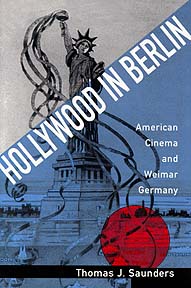 | Title: Hollywood in Berlin: American cinema and Weimar Germany Author: Saunders, Thomas J Published: University of California Press, 1994 Subjects: Cinema and Performance Arts | German Studies | Film | United States History | European History Publisher's Description: The setting is 1920s Berlin, cultural heart of Europe and the era's only serious cinematic rival to Hollywood. In his engaging study, Thomas Saunders explores an outstanding example of one of the most important cultural developments of this century: global Americanization through the motion picture.The invasion of Germany by American films, which began in 1921 with overlapping waves of sensationalist serials, slapstick shorts, society pictures, and historical epics, initiated a decade of cultural collision and accommodation. On the one hand it fueled an impassioned debate about the properties of cinema and the specter of wholesale Americanization. On the other hand it spawned unprecedented levels of cooperation and exchange.In Berlin, American motion pictures not only entertained all social classes and film tastes but also served as a vehicle for American values and a source of sharp economic competition. Hollywood in Berlin correlates the changing forms of Hollywood's contributions to Weimar culture and the discourses that framed and interpreted them, restoring historical contours to a leading aspect of cultural interchange in this century. At the same time, the book successfully embeds Weimar cinema in its contemporary international setting. [brief] Similar Items |
| 2. | 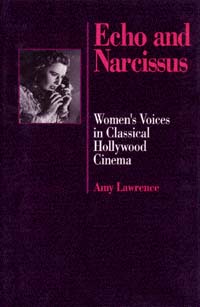 | Title: Echo and Narcissus: women's voices in classical Hollywood cinema Author: Lawrence, Amy Published: University of California Press, 1991 Subjects: Cinema and Performance Arts | Film | Women's Studies Publisher's Description: Do women in classical Hollywood cinema ever truly speak for themselves? In Echo and Narcissus , Amy Lawrence examines eight classic films to show how women's speech is repeatedly constructed as a "problem," an affront to male authority. This book expands feminist studies of the representation of women in film, enabling us to see individual films in new ways, and to ask new questions of other films.Using Sadie Thompson (1928), Blackmail (1929), Rain (1932), The Spiral Staircase , Sorry,Wrong Number , Notorious , Sunset Boulevard (1950) and To Kill a Mockingbird (1962), Lawrence illustrates how women's voices are positioned within narratives that require their submission to patriarchal roles and how their attempts to speak provoke increasingly severe repression. She also shows how women's natural ability to speak is interrupted, made difficult, or conditioned to a suffocating degree by sound technology itself. Telephones, phonographs, voice-overs, and dubbing are foregrounded, called upon to silence women and to restore the primacy of the image.Unlike the usage of "voice" by feminist and literary critics to discuss broad issues of authorship and point of view, in film studies the physical voice itself is a primary focus. Echo and Narcissus shows how assumptions about the "deficiencies" of women's voices and speech are embedded in sound's history, technology, uses, and marketing. Moreover, the construction of the woman's voice is inserted into the ideologically loaded cinematic and narrative conventions governing the representation of women in Hollywood film. [brief] Similar Items |
| 3. | 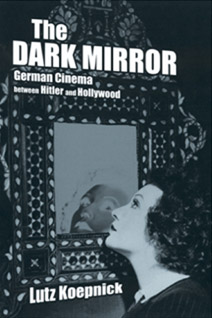 | Title: The dark mirror: German cinema between Hitler and Hollywood Author: Koepnick, Lutz P. (Lutz Peter) Published: University of California Press, 2002 Subjects: Cinema and Performance Arts | German Studies | Music | Film Publisher's Description: Lutz Koepnick analyzes the complicated relationship between two cinemas - Hollywood's and Nazi Germany's - in this theoretically and politically incisive study. The Dark Mirror examines the split course of German popular film from the early 1930s until the mid 1950s, showing how Nazi filmmakers appropriated Hollywood conventions and how German film exiles reworked German cultural material in their efforts to find a working base in the Hollywood studio system. Through detailed readings of specific films, Koepnick provides a vivid sense of the give and take between German and American cinema. [brief] Similar Items |
| 4. | 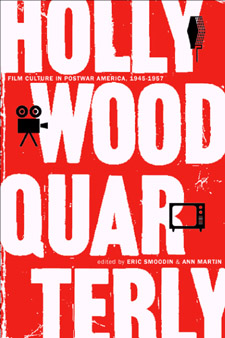 | Title: Hollywood quarterly: film culture in postwar America, 1945-1957 Author: Smoodin, Eric Loren Published: University of California Press, 2002 Subjects: Cinema and Performance Arts Publisher's Description: The first issue of Hollywood Quarterly, in October 1945, marked the appearance of the most significant, successful, and regularly published journal of its kind in the United States. For its entire life, the Quarterly held to the leftist utopianism of its founders, several of whom would later be blacklisted. The journal attracted a collection of writers unmatched in North American film studies for the heterogeneity of their intellectual and practical concerns: from film, radio, and television industry workers to academics; from Sam Goldwyn, Edith Head, and Chuck Jones to Theodor Adorno and Siegfried Kracauer. For this volume, Eric Smoodin and Ann Martin have selected essays that reflect the astonishing eclecticism of the journal, with sections on animation, the avant-garde, and documentary to go along with a representative sampling of articles about feature-length narrative films. They have also included articles on radio and television, reflecting the contents of just about every issue of the journal and exemplifying the extraordinary moment in film and media studies that Hollywood Quarterly captured and helped to create. In 1951, Hollywood Quarterly was renamed the Quarterly of Film, Radio, and Television, and in 1958 it was replaced by Film Quarterly, which is still published by the University of California Press. During those first twelve years, the Quarterly maintained an intelligent, sophisticated, and critical interest in all the major entertainment media, not just film, and in issue after issue insisted on the importance of both aesthetic and sociological methodologies for studying popular culture, and on the political significance of the mass media. [brief] Similar Items |
| 5. | 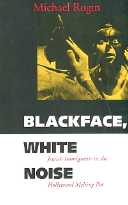 | Title: Blackface, white noise: Jewish immigrants in the Hollywood melting pot Author: Rogin, Michael 1937- Published: University of California Press, 1998 Subjects: American Studies | Film | United States History | Jewish Studies | Popular Culture Publisher's Description: The tangled connections that have bound Jews to African Americans in popular culture and liberal politics are at the heart of Michael Rogin's arresting and unnerving book. Looking at films from Birth of a Nation to Forrest Gump , Rogin explores blackface in Hollywood films as an aperture to broader issues: the nature of "white" identity in America, the role of race in transforming immigrants into "Americans," the common experiences of Jews and African Americans that made Jews key supporters in the fight for racial equality, and the social importance of popular culture. Rogin's forcefully argued study challenges us to confront the harsh truths behind the popularity of racial masquerade. [brief] Similar Items |
| 6. | 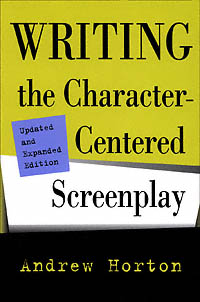 | Title: Writing the character-centered screenplay Author: Horton, Andrew Published: University of California Press, 1994 Subjects: Cinema and Performance Arts | Film | Writing Publisher's Description: "We need good screenwriters who understand character." Everywhere Andrew Horton traveled in researching this book - from Hollywood to Hungary - he heard the same refrain. Yet most of the standard how-to books on screenwriting follow the film industry's earlier lead in focusing almost exclusively on plot and formulaic structures.With this book, Horton, a film scholar and successful screenwriter, provides the definitive work on the character-based screenplay. Exceptionally wide-ranging - covering American, international, mainstream, and "off-Hollywood" films, as well as television - the book offers creative strategies and essential practical information.Horton begins by placing screenwriting in the context of the storytelling tradition, arguing through literary and cultural analysis that all great stories revolve around a strong central character. He then suggests specific techniques and concepts to help any writer - whether new or experienced - build more vivid characters and screenplays. Centering his discussion around four film examples - including Thelma & Louise and The Silence of the Lambs - and the television series, Northern Exposure , he takes the reader step-by-step through the screenwriting process, starting with the development of multi-dimensional characters and continuing through to rewrite. Finally, he includes a wealth of information about contests, fellowships, and film festivals.Espousing a new, character-based approach to screenwriting, this engaging, insightful work will prove an essential guide to all of those involved in the writing and development of film scripts. [brief] Similar Items |
| 7. | 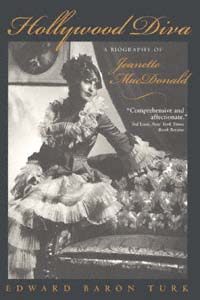 | Title: Hollywood diva: a biography of Jeanette MacDonald Author: Turk, Edward Baron Published: University of California Press, 1998 Subjects: Cinema and Performance Arts | American Studies | Gender Studies | Autobiographies and Biographies Publisher's Description: Jeanette MacDonald, the movie musical's first superstar, was an American original whose onscreen radiance mirrored a beguiling real-life personality. Based in large part on the author's exclusive access to MacDonald's private papers, including her unpublished memoir, this vivid, often touching biography transports us to a time when lavish musical films were major cultural events and a worldwide public eagerly awaited each new chance to fall under the singer's spell. Edward Baron Turk shows how MacDonald brilliantly earned her Hollywood nickname of "Iron Butterfly," and why she deserves a privileged position in the history of music and motion pictures.What made MacDonald a woman for our times, readers will discover, was her uncommon courage: Onscreen, the actress portrayed strong charcters in pursuit of deep emotional fulfillment, often in defiance of social orthodoxy, while offscreen she personified energy, discipline, and practical intellect. Drawing on interviews with individuals who knew her and on MacDonald's own words, Turk brings to life the intricate relations between the star and her legendary costars Maurice Chevalier, Clark Gable, and, above all, baritone Nelson Eddy. He reveals the deep crushes she inspired in movie giants Ernst Lubitsch and Louis B. Mayer and the extraordinary love story she shared with her husband of twenty-seven years, actor Gene Raymond.More than simply another star biography, however, this is a chronicle of American music from 1920s Broadway to 1960s television, in which Turk details MacDonald's fearless efforts to break down distinctions between High Art and mass-consumed entertainment. Hollywood Diva will attract fans of opera and concert music as much as enthusiasts of the great Hollywood musicals. It is first-rate cultural and film history. [brief] Similar Items |
| 8. | 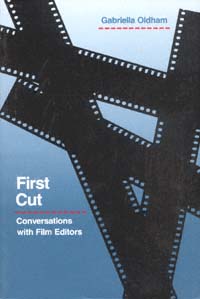 | Title: First cut: conversations with film editors Author: Oldham, Gabriella Published: University of California Press, 1992 Subjects: Cinema and Performance Arts | Film | Media Studies Publisher's Description: First Cut offers an opportunity to learn what film editing really is, and to learn from the source. Gabriella Oldham's interviews with twenty-three award-winning film editors give a full picture of the complex art and craft of editing a film. Filled with animated anecdotes and detailed examples, thi . . . [more] Similar Items |
| 9. | 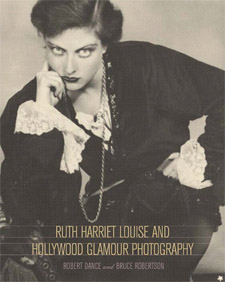 | Title: Ruth Harriet Louise and Hollywood glamour photography Author: Dance, Robert 1955- Published: University of California Press, 2002 Subjects: Cinema and Performance Arts | Photography | California and the West Publisher's Description: When Ruth Harriet Louise joined Metro-Goldwyn-Mayer, the studio with "more stars than there are in heaven," she was twenty-two years old and the only woman working as a portrait photographer for the Hollywood studios. In a career that lasted from 1925 until 1930, Louise (born Ruth Goldstein) photographed all the stars, contract players, and many of the hopefuls who passed through the studio's front gates, including Greta Garbo, Lon Chaney, John Gilbert, Joan Crawford, Marion Davies, and Norma Shearer. This book, which coincides with a major traveling retrospective of Louise's work organized by the Santa Barbara Museum of Art, is the first collection of her exquisite photographs. Containing over one hundred breathtaking images--reproduced from the original negatives--, it attests to the talent and vision of a surprisingly unknown photographer who formed the images and helped create the popularity of some of our most enduring stars. Louise shot about one hundred thousand negatives that distilled the glamour, drama, and excitement of MGM's feature productions. Louise's original photographs were circulated to millions of moviegoers, magazine and newspaper readers, and fans. The movies and publicity machine that these photographs supported shaped the basic notions of stardom, glamour, and fashion in the 1920s and still affect our ideas today. Robert Dance and Bruce Robertson re-create the entire process--from the moment a performer sat in front of Louise's camera to the point at which a fan pasted a star's picture into a scrapbook. They provide insight into Louise's work habits in the studio and describe the personal dynamics between Louise and the actors she photographed. They include a condensed account of the methods of other photographers, a sharp analysis of fan culture in the period, and superb readings of Louise's photographs. With its combination of well-known and rare images, all magnificently reproduced, this book is a fitting tribute to one of the most gifted and underappreciated glamour photographers of Hollywood's golden period. Note: The hardcover edition of this book does have a dust jacket. (Some hardcovers of University of California Press books available in paperback do not.) [brief] Similar Items |
| 10. | 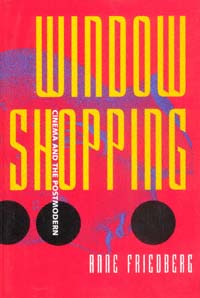 | Title: Window shopping: cinema and the postmodern Author: Friedberg, Anne Published: University of California Press, 1993 Subjects: Cinema and Performance Arts | Film | Popular Culture | Women's Studies Publisher's Description: Departing from those who define postmodernism in film merely as a visual style or set of narrative conventions, Anne Friedberg develops the first sustained account of the cinema's role in postmodern culture. She explores the ways in which nineteenth-century visual experiences - photography, urban strolling, panorama and diorama entertainments - anticipate contemporary pleasures provided by cinema, video, shopping malls, and emerging "virtual reality" technologies.Comparing the visual practices of shopping, tourism, and film-viewing, Friedberg identifies the experience of "virtual" mobility through time and space as a key determinant of postmodern cultural identity. Evaluating the theories of Jameson, Lyotard, Baudrillard, and others, she adds critical insights about the role of gender and gender mobility in the configurations of consumer culture.A strikingly original work, Window Shopping challenges many of the existing assumptions about what exactly post modern is. This book marks the emergence of a compelling new voice in the study of contemporary culture. [brief] Similar Items |
| 11. | 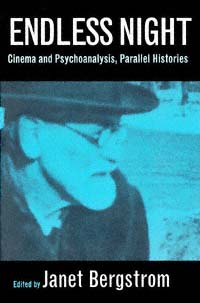 | Title: Endless night: cinema and psychoanalysis, parallel histories Author: Bergstrom, Janet 1946- Published: University of California Press, 1999 Subjects: Cinema and Performance Arts | Art Theory | Psychology Publisher's Description: The "endless night" that film theory and psychoanalysis share is the darkness that these two disciplines face in their quest for the logics of intelligibility. This collection emphasizes the history of theory to demonstrate that film theory must be written with a strong sense of historical consciousness, curiosity, and archaeological craft. The volume brings together film theorists and practicing psychoanalysts to encourage an exchange of views between disciplines that encounter each other all too rarely. [brief] Similar Items |
| 12. | 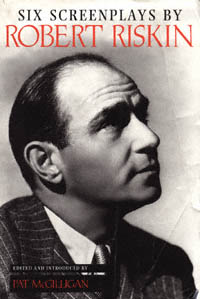 | Title: Six screenplays Author: Riskin, Robert Published: University of California Press, 1997 Subjects: Cinema and Performance Arts | Film Publisher's Description: Screenwriter Robert Riskin (1897-1955) was a towering figure even among the giants of Hollywood's Golden Age. Known for his unique blend of humor and romance, wisecracking and idealism, Riskin teamed with director Frank Capra to produce some of his most memorable films. Pat McGilligan has collected six of the best Riskin scripts: Platinum Blonde (1931), American Madness (1932), It Happened One Night (1934), Mr. Deeds Goes to Town (1936), Lost Horizon (1937), and Meet John Doe (1941). All of them were directed by Capra, and although Capra's work has been amply chronicled and celebrated, Riskin's share in the collaboration has been overlooked since his death. McGilligan provides the "backstory" for the forgotten half of the team, indispensable counterpoint to the director's self-mythologizing autobiography - and incidentally the missing link in any study of Capra's career.Riskin's own career, although interrupted by patriotic duty and cut short by personal tragedy, produced as consistent, entertaining, thoughtful, and enduring a body of work as any Hollywood writer's. Those who know and love these vintage films will treasure these scripts. McGilligan's introduction offers new information and insights for fans, scholars, and general readers. [brief] Similar Items |
| 13. | 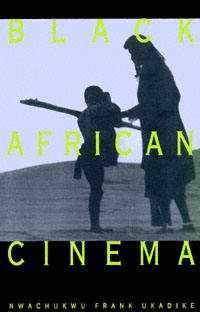 | Title: Black African cinema Author: Ukadike, Nwachukwu Frank Published: University of California Press, 1994 Subjects: Cinema and Performance Arts | Film Publisher's Description: From the proselytizing lantern slides of early Christian missionaries to contemporary films that look at Africa through an African lens, N. Frank Ukadike explores the development of black African cinema. He examines the impact of culture and history, and of technology and co-production, on filmmaking throughout Africa.Every aspect of African contact with and contribution to cinematic practices receives attention: British colonial cinema; the thematic and stylistic diversity of the pioneering "francophone" films; the effects of television on the motion picture industry; and patterns of television documentary filmmaking in "anglophone" regions. Ukadike gives special attention to the growth of independent production in Ghana and Nigeria, the unique Yoruba theater-film tradition, and the militant liberationist tendencies of "lusophone" filmmakers. He offers a lucid discussion of oral tradition as a creative matrix and the relationship between cinema and other forms of popular culture. And, by contrasting "new" African films with those based on the traditional paradigm, he explores the trends emerging from the eighties and nineties.Clearly written and accessible to specialist and general reader alike, Black African Cinema 's analysis of key films and issues - the most comprehensive in English - is unique. The book's pan-Africanist vision heralds important new strategies for appraising a cinema that increasingly attracts the attention of film students and Africanists. [brief] Similar Items |
| 14. | 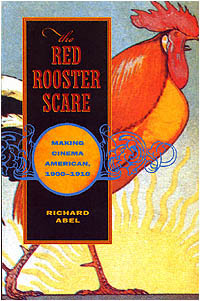 | Title: The red rooster scare: making cinema American, 1900-1910 Author: Abel, Richard 1941- Published: University of California Press, 1999 Subjects: Cinema and Performance Arts | Cultural Anthropology | Sociology Publisher's Description: Only once in cinema history have imported films dominated the American market: during the nickelodeon era in the early years of the twentieth century, when the Pathé company's "Red Rooster" films could be found "everywhere." Through extensive original research, Richard Abel demonstrates how crucial French films were in making "going to the movies" popular in the United States, first in vaudeville houses and then in nickelodeons.Abel then deftly exposes the consequences of that popularity. He shows how, in the midst of fears about mass immigration and concern that women and children (many of them immigrants) were the principal audience for moving pictures, the nickelodeon became a contested site of Americanization. Pathé's Red Rooster films came to be defined as dangerously "foreign" and "alien" and even "feminine" (especially in relation to "American" subjects like westerns). Their impact was thwarted, and they were nearly excluded from the market, all in order to ensure that the American cinema would be truly American. The Red Rooster Scare offers a revealing and readable cultural history of American cinema's nationalization, by one of the most distinguished historians of early cinema. [brief] Similar Items |
| 15. | 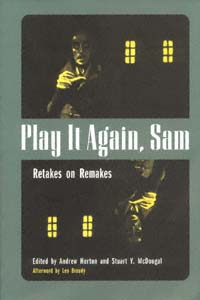 | Title: Play it again, Sam: retakes on remakes Author: Horton, Andrew Published: University of California Press, 1998 Subjects: Cinema and Performance Arts | Film Publisher's Description: Play It Again, Sam is a timely investigation of a topic that until now has received almost no critical attention in film and cultural studies: the cinematic remake. As cinema enters its second century, more remakes are appearing than ever before, and these writers consider the full range: Hollywood films that have been recycled by Hollywood, such as The Jazz Singer, Cape Fear , and Robin Hood ; foreign films including Breathless ; and Three Men and a Baby , which Hollywood has reworked for American audiences; and foreign films based on American works, among them Yugoslav director Emir Kusturica's Time of the Gypsies , which is a "makeover" of Coppola's Godfather films. As these essays demonstrate, films are remade by other films (Alfred Hitchcock went so far as to remake his own The Man Who Knew Too Much ) and by other media as well.The editors and contributors draw upon narrative, film, and cultural theories, and consider gender, genre, and psychological issues, presenting the "remake" as a special artistic form of repetition with a difference and as a commercial product aimed at profits in the marketplace. The remake flourishes at the crossroads of the old and the new, the known and the unknown. Play It Again, Sam takes the reader on an eye-opening tour of this hitherto unexplored territory. [brief] Similar Items |
| 16. | 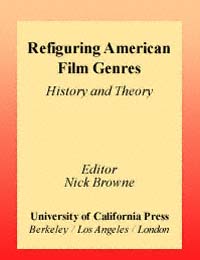 | Title: Refiguring American film genres: history and theory Author: Browne, Nick Published: University of California Press, 1998 Subjects: American Studies | Film | Cultural Anthropology Publisher's Description: This collection of essays by leading American film scholars charts a whole new territory in genre film criticism. Rather than assuming that genres are self-evident categories, the contributors offer innovative ways to think about types of films, and patterns within films, in a historical context. Challenging familiar attitudes, the essays offer new conceptual frameworks and a fresh look at how popular culture functions in American society. The range of essays is exceptional, from David J. Russell's insights into the horror genre to Carol J. Clover's provocative take on "trial films" to Leo Braudy's argument for the subject of nature as a genre. Also included are essays on melodrama, race, film noir , and the industrial context of genre production. The contributors confront the poststructuralist critique of genre head-on; together they are certain to shape future debates concerning the viability and vitality of genre in studying American cinema. [brief] Similar Items |
| 17. | 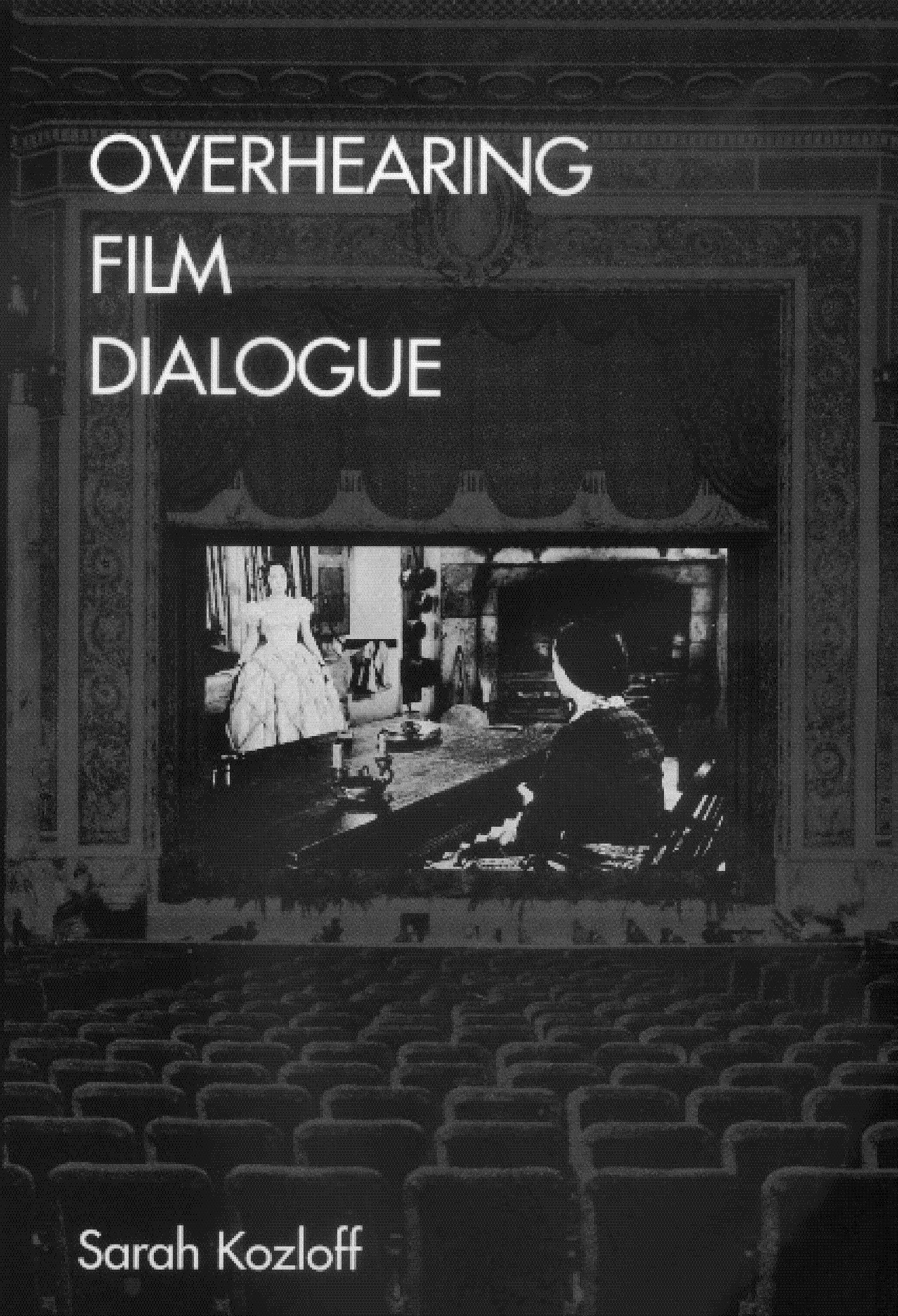 | Title: Overhearing film dialogue Author: Kozloff, Sarah Published: University of California Press, 2000 Subjects: Cinema and Performance Arts | Literary Theory and Criticism | American Studies | Film Publisher's Description: Since the birth of cinema, film has been lauded as a visual rather than a verbal medium; this sentiment was epitomized by John Ford's assertion in 1964 that, "When a motion picture is at its best, it is long on action and short on dialogue." Little serious work has been done on the subject of film dialogue, yet what characters say and how they say it has been crucial to our experience and understanding of every film since the coming of sound. Through informative discussions of dozens of classic and contemporary films - from Bringing Up Baby to Terms of Endearment, from Stagecoach to Reservoir Dogs --this lively book provides the first full-length study of the use of dialogue in American film. Sarah Kozloff shows why dialogue has been neglected in the analysis of narrative film and uncovers the essential contributions dialogue makes to a film's development and impact. She uses narrative theory and drama theory to analyze the functions that dialogue typically serves in a film. The second part of the book is a comprehensive discussion of the role and nature of dialogue in four film genres: westerns, screwball comedies, gangster films, and melodramas. Focusing on topics such as class and ethnic dialects, censorship, and the effect of dramatic irony, Kozloff provides an illuminating new perspective on film genres. [brief] Similar Items |
| 18. | 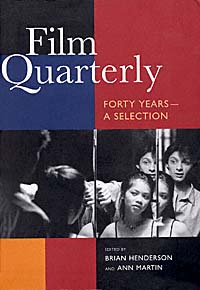 | Title: Film quarterly: forty years--a selection Author: Henderson, Brian Published: University of California Press, 1999 Subjects: Cinema and Performance Arts | Film Publisher's Description: During its forty years as a forum for scholars, filmmakers, critics, and film lovers, Film Quarterly has looked in depth at the most critical elements in the political, social, theoretical, and aesthetic history of the cinema. Once closely tied to Hollywood, the journal was investigated by the Tenney committee in 1946 and two of its board members came under fire from the House Un-American Activities Committee in 1951. After several metamorphoses, however, and with the dedicated participation of its editors, board members, and authors, the journal now stands as the oldest and most prominent journal in cinema studies, publishing film (and video and television) history, criticism, theory, analysis, interviews, and film and book reviews.Spanning the 1950s to the 1990s, Film Quarterly: Forty Years - A Selection is a collaborative effort by the past and present editors and the editorial board to celebrate and illuminate the medium that has prompted so much thought and exchange during the journal's lifetime. From articles on documentary and genre to history and technology, narrative and the avant-garde, this carefully selected collection proposes groundbreaking theoretical models, fresh approaches to individual film classics, reassessments of filmmakers' bodies of work, and discussions of new films and technologies. [brief] Similar Items |
| 19. | 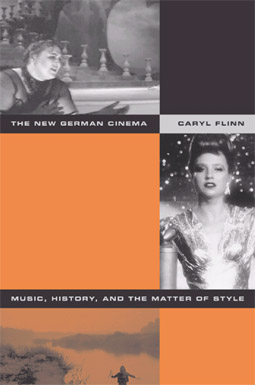 | Title: The new German cinema: music, history, and the matter of style Author: Flinn, Caryl Published: University of California Press, 2003 Subjects: Cinema and Performance Arts | German Studies | Music Publisher's Description: When New German cinema directors like R. W. Fassbinder, Ulrike Ottinger, and Werner Schroeter explored issues of identity - national, political, personal, and sexual - music and film style played crucial roles. Most studies of the celebrated film movement, however, have sidestepped the role of music, a curious oversight given its importance to German culture and nation formation. Caryl Flinn's study reverses this trend, identifying styles of historical remembrance in which music participates. Flinn concentrates on those styles that urge listeners to interact with difference - including that embodied in Germany's difficult history - rather than to "master" or "get past" it. Flinn breaks new ground by considering contemporary reception frameworks of the New German Cinema, a generation after its end. She discusses transnational, cultural, and historical contexts as well as the sexual, ethnic, national, and historical diversity of audiences. Through detailed case studies, she shows how music helps filmgoers engage with a range of historical subjects and experiences. Each chapter of The New German Cinema examines a particular stylistic strategy, assessing music's role in each. The study also examines queer strategies like kitsch and camp and explores the movement's charged construction of human bodies on which issues of ruination, survival, memory, and pleasure are played out. [brief] Similar Items |
| 20. | 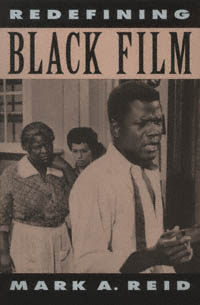 | Title: Redefining Black film Author: Reid, Mark (Mark A.) Published: University of California Press, 1993 Subjects: Cinema and Performance Arts | Film | African American Studies Publisher's Description: Can films about black characters, produced by white filmmakers, be considered "black films"? In answering this question, Mark Reid reassesses black film history, carefully distinguishing between films controlled by blacks and films that utilize black talent, but are controlled by whites. Previous black film criticism has "buried" the true black film industry, Reid says, by concentrating on films that are about, but not by, blacks.Reid's discussion of black independent films - defined as films that focus on the black community and that are written, directed, produced, and distributed by blacks - ranges from the earliest black involvement at the turn of the century up through the civil rights movement of the Sixties and the recent resurgence of feminism in black cultural production. His critical assessment of work by some black filmmakers such as Spike Lee notes how these films avoid dramatizations of sexism, homophobia, and classism within the black community.In the area of black commercial film controlled by whites, Reid considers three genres: African-American comedy, black family film, and black action film. He points out that even when these films use black writers and directors, a black perspective rarely surfaces.Reid's innovative critical approach, which transcends the "black-image" language of earlier studies - and at the same time redefines black film - makes an important contribution to film history. Certain to attract film scholars, this work will also appeal to anyone interested in African-American and Women's Studies. [brief] Similar Items |